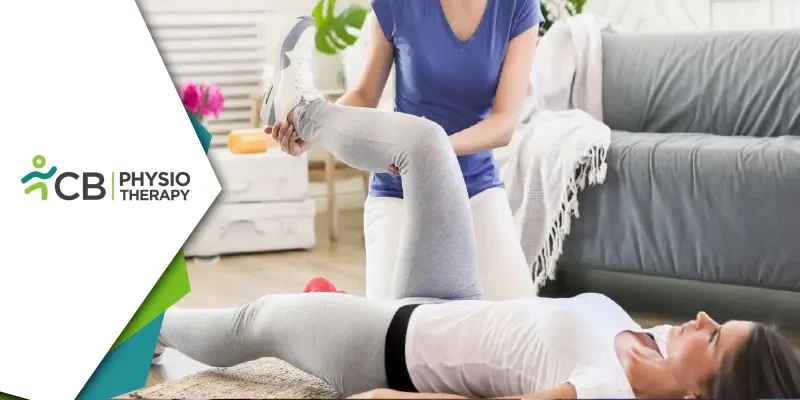In our fast-paced world, finding time to prioritize our health can often be a challenge. Whether it's recovering from an injury, managing chronic pain, or simply maintaining optimal Physical function, Physiotherapy plays a crucial role. However, attending regular sessions at a clinic may not always be feasible. Thankfully, advancements in portable physiotherapy machines and innovative exercise apps like Activ-PT are transforming how we approach rehabilitation and wellness. In this blog, we'll explore the benefits of at-home physiotherapy and how you can harness the power of these tools for convenient and effective healing.
Understanding At-Home Physiotherapy
At-home physiotherapy involves performing prescribed exercises and techniques in the comfort of your own space, without frequent clinic visits. It provides individuals with the flexibility to integrate rehabilitation into their daily routines, fostering independence and empowerment throughout the healing process. Whether you're recovering from surgery, managing a chronic condition, or seeking to improve mobility, at-home physiotherapy offers a personalized approach to wellness.Benefits of At-Home Physiotherapy
1: Convenience: One of the primary advantages of at-home physiotherapy is its convenience. No longer do you need to commute to appointments or adhere to rigid schedules. You can engage in therapy sessions at a time that suits you best, whether it's before work, during lunch breaks, or in the evenings.2: Convenient Therapy: Gone are the days when physiotherapy was confined to clinical settings. With the emergence of portable physiotherapy machines like TENS, Laser therapy, therapeutic ultrasound, etc, individuals now have the freedom to undergo rehabilitation from the comfort of their own homes. These devices are designed to deliver targeted therapy, ranging from pain relief to muscle strengthening, without the need for bulky equipment or frequent clinic visits.
3: Cost-Effective: By eliminating the need for frequent clinic visits, at-home physiotherapy can be a more cost-effective option in the long run.
4: Personalized Exercise Companion: Digital tools like the Activ PT exercise app are revolutionizing the way we approach rehabilitation and fitness. Developed by expert physiotherapists, Activ PT offers a wide range of guided exercises and rehabilitation programs designed to improve strength, flexibility, and mobility.
5: Comfort and Privacy: Healing often thrives in environments where individuals feel comfortable and relaxed. At-home physiotherapy provides a sense of familiarity and privacy, enabling you to focus on your rehabilitation without external distractions or concerns.
Techniques for At-Home Physiotherapy
1: Stretching and Range of Motion Exercises: These exercises aim to improve flexibility and mobility in affected joints and muscles. They may include gentle stretches, range of motion movements, and dynamic stretches to enhance circulation and reduce stiffness.2: Strength Training: Building strength is crucial for supporting injured or weakened areas of the body. Bodyweight exercises, resistance bands, and light weights can be incorporated into your routine to gradually increase muscle strength and endurance.
3: Balance and Stability Exercises: Enhancing balance and stability is essential for preventing falls and improving overall functional mobility. Simple exercises such as standing on one leg, heel-to-toe walking, and stability ball exercises can help improve balance and proprioception.
4: Cardiovascular Conditioning: Cardiovascular exercises such as walking, cycling, etc, can improve heart health, endurance, and overall fitness levels. Engage in activities that are appropriate for your fitness level and gradually increase intensity as tolerated.
5: Pain Management Techniques: Incorporate pain management portable devices and techniques such as heat therapy, cold therapy, and self-massage to alleviate discomfort and promote relaxation in affected areas.
Tips for Success
1: Seek Professional Guidance: While at-home physiotherapy offers independence, it's essential to seek guidance from a qualified physiotherapist. He/she can assess your condition, provide personalized recommendations, and monitor your progress to ensure safe and effective rehabilitation.2: Consistency is Key: Consistently engaging in your prescribed exercises and routines is essential for progress and recovery. Aim for regularity rather than intensity, gradually increasing the frequency and duration of your sessions over time.
3: Listen to Your Body: Pay attention to your body's signals and adjust your exercises accordingly. If you experience pain or discomfort beyond normal exertion, scale back or modify the exercise to prevent further injury.
4: Set Realistic Goals: Set achievable goals that align with your rehabilitation journey. Celebrate small victories along the way and remain patient and persistent in your efforts.
5: Stay Motivated: Find sources of motivation and encouragement to stay committed to your at-home physiotherapy routine. As maintaining motivation is key to long-term success.
At-home Physiotherapy has never been more accessible or effective, thanks to advancements in portable technology and digital health solutions like Activ PT. By incorporating these tools into your rehabilitation routine, you can enjoy the convenience of therapy sessions from the comfort of your own home, all while achieving optimal healing and wellness. Remember to consult with your physiotherapist before starting any new exercise program, and always prioritize safety and proper technique during workouts. With dedication, consistency, and the right tools at your disposal, you can embark on a journey to better health and vitality, one workout at a time.
If you or a loved one in South Delhi requires home Physiotherapy, our dedicated team is ready to support your journey towards recovery. Contact us now to schedule home physiotherapy and discover how you can enhance your rehabilitation right in the heart of South Delhi

